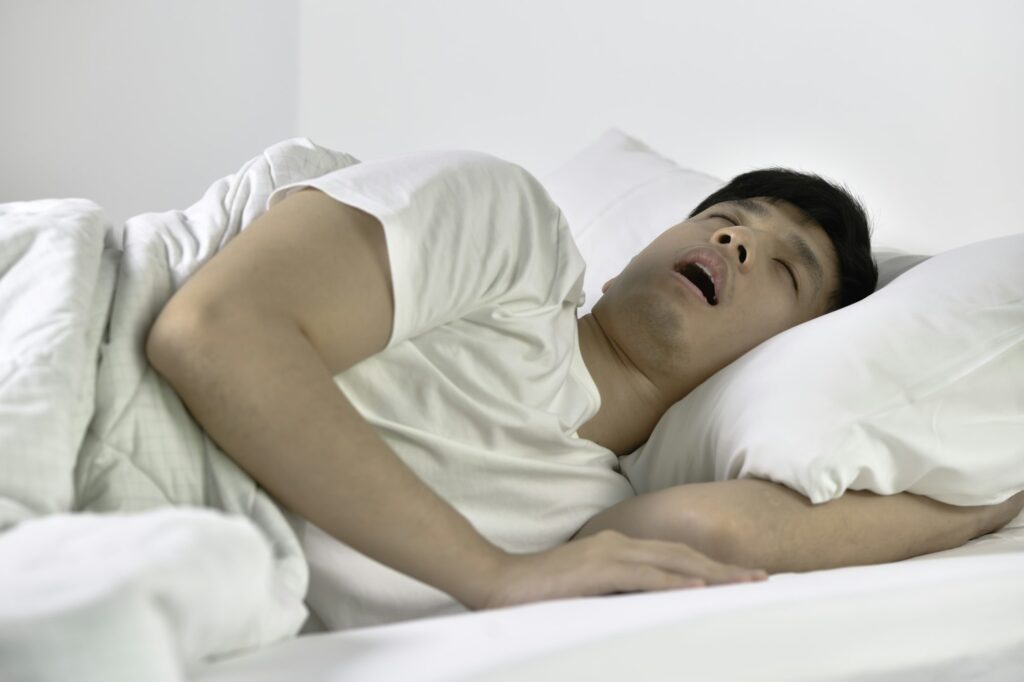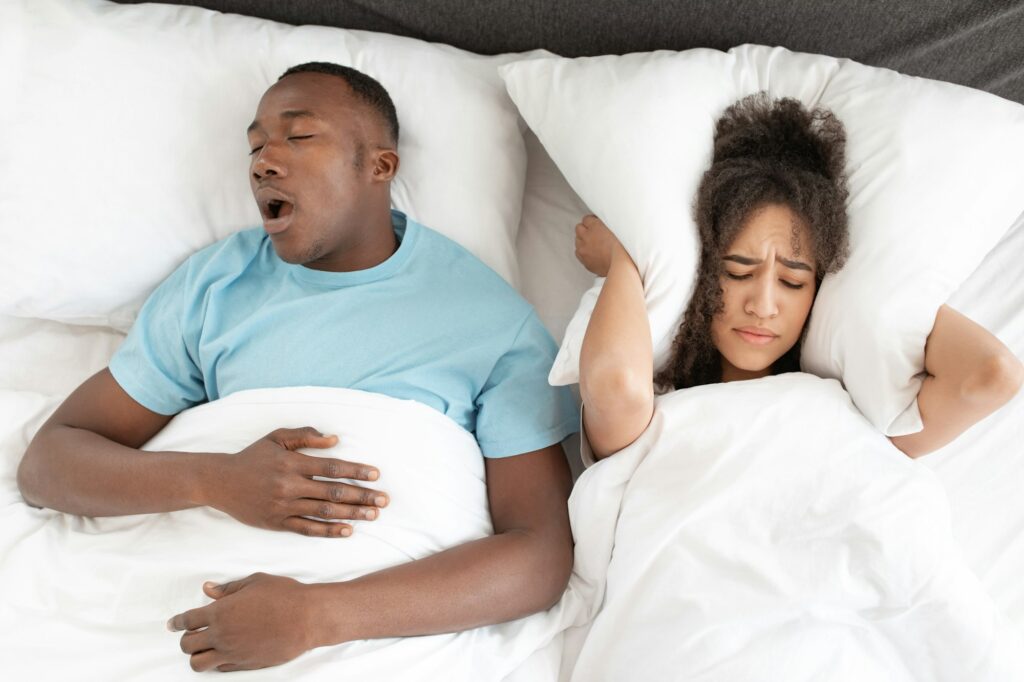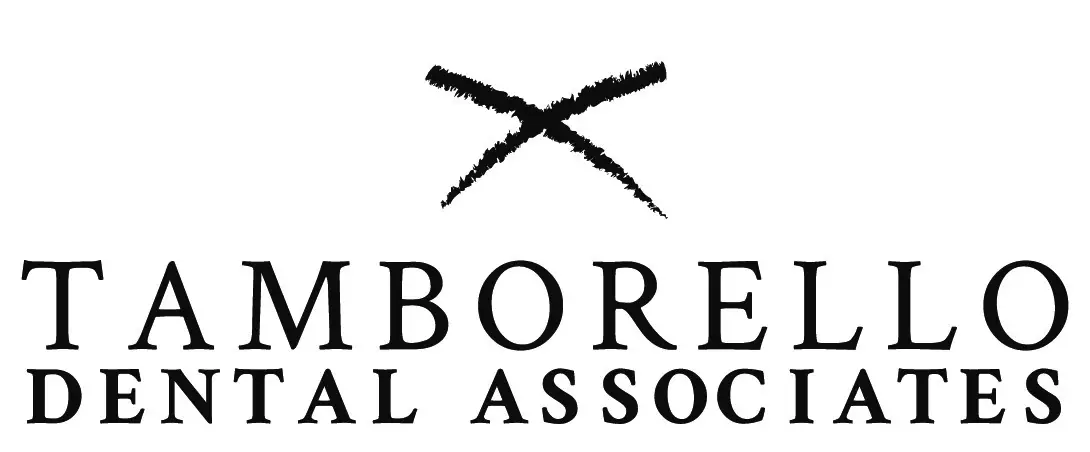The best sleeping position with sleep apnea?
Sleep apnea is a common sleep disorder that affects millions of people worldwide. It disrupts sleep and can lead to serious health complications if left untreated.
One of the key factors that can influence sleep apnea is your sleeping position. Certain positions can exacerbate the condition, while others can help alleviate symptoms.

In this article, we will delve into the best sleeping positions for managing sleep apnea. We aim to provide practical sleep solutions that can improve your sleep quality and overall health.
Whether you're an adult with sleep apnea or a caregiver for a child with the condition, this guide is for you. We'll also provide insights for those experiencing undiagnosed sleep disturbances and seeking potential solutions.
Join us as we explore the world of sleep apnea and the role of sleeping positions in managing this condition.
Understanding Sleep Apnea
Sleep apnea is a sleep disorder characterized by repeated interruptions in breathing during sleep. These interruptions can last from a few seconds to minutes and may occur 30 or more times per hour.
The most common type of sleep apnea is Obstructive Sleep Apnea (OSA). This occurs when the muscles in the back of the throat fail to keep the airway open, causing a temporary pause in breathing.
Another type is Central Sleep Apnea (CSA), where the brain doesn't send proper signals to the muscles that control breathing. Mixed sleep apnea, a combination of OSA and CSA, is less common but equally disruptive.
Understanding the type of sleep apnea you or your loved one has is crucial. It helps in determining the best sleep solutions, including the optimal sleep apnea sleeping position.
Symptoms and Types of Sleep Apnea
The symptoms of sleep apnea often include loud snoring, restless sleep, and waking up with a dry mouth or sore throat. Other symptoms may include morning headaches, insomnia, excessive daytime sleepiness, attention problems, and irritability.
It's important to note that not everyone who snores has sleep apnea. However, snoring followed by silent pauses, gasping, or choking sounds is a likely indication of the condition.
While OSA is more common in adults, children can also be affected. In children, sleep apnea can cause hyperactivity, poor school performance, and angry or hostile behavior. It's crucial to consult a healthcare provider if you or your child exhibit these symptoms.
The Prevalence of Sleep Apnea
Sleep apnea is a widespread condition. It's estimated that over 22 million Americans suffer from sleep apnea, with 80 percent of moderate to severe cases undiagnosed.
The prevalence of sleep apnea increases with age and is more common in men than women. However, women's risk increases after menopause. Understanding the prevalence of sleep apnea underscores the importance of finding effective sleep solutions, including the best sleeping position for sleep apnea.
How Sleep Position Affects Sleep Apnea
The position in which you sleep can significantly impact sleep apnea symptoms. Certain positions can exacerbate the condition, while others can help alleviate it.
When you sleep on your back, gravity can cause the tongue and soft tissues to fall back into the throat. This can obstruct the airway, leading to increased snoring and breathing interruptions. This position, known as supine, is often the worst for those with sleep apnea.
On the other hand, side sleeping can help keep the airway open. This position is often recommended as the best sleeping position for sleep apnea. However, the effectiveness of this position can vary among individuals.
Stomach sleeping can also help reduce sleep apnea symptoms in some people. However, it can lead to neck and back problems over time due to the unnatural position of the head.
The Role of Gravity and Airway Obstruction
Gravity plays a significant role in sleep apnea. When you lie flat, especially on your back, gravity pulls the soft tissues in the throat downward. This can cause the airway to narrow or become blocked, leading to sleep apnea episodes.
The effect of gravity on the airway is why elevating the head can help some people with sleep apnea. Using a wedge pillow or an adjustable bed can help keep the airway open by reducing the gravitational pull on the throat tissues.
However, it's important to note that while changing sleep positions can help, it's not a cure for sleep apnea. It should be part of a comprehensive treatment plan that may include lifestyle changes and medical interventions.
Positional Therapy: An Overview
Positional therapy is a behavioral strategy used to treat positional sleep apnea. It involves changing sleep positions to reduce the number of apneas experienced during sleep.
This therapy often involves techniques or devices to prevent back sleeping. These can include special pillows, positional alarms, or even wearable devices that vibrate when you roll onto your back.
While positional therapy can be effective, it's not suitable for everyone. It's most effective for people with mild to moderate sleep apnea who experience a significant increase in apneas when sleeping on their back. As always, it's important to discuss any new treatment approach with a healthcare provider.
Sleeping Sitting Up For Sleep Apnea
The best sleeping position for sleep apnea is generally considered to be on your side. This position can help keep your airway open and reduce the number of apneas you experience. However, the effectiveness of this position can vary among individuals.
It's also important to note that while changing sleep positions can help, it's not a cure for sleep apnea. It should be part of a comprehensive treatment plan that may include lifestyle changes and medical interventions.
Side Sleeping: The Optimal Position
Side sleeping is often recommended as the best sleeping position for sleep apnea. This position can help keep the airway open, reducing the number of apneas experienced during sleep.
However, not all side sleeping positions are equal. The left side is often considered better than the right because it can help reduce acid reflux, a common issue for people with sleep apnea.
To enhance side sleeping, consider the following tips:
- Use a body pillow to maintain alignment and prevent rolling onto your back.
- Try a positional therapy device designed to prevent back sleeping.
- Use a supportive pillow to keep your head and neck properly aligned.

Maintaining the side sleeping position throughout the night can be challenging, especially if you're used to sleeping on your back. However, there are several strategies you can use to enhance side sleeping.
One effective method is to use a body pillow. This can help maintain alignment and prevent you from rolling onto your back during sleep. It can also provide additional support and comfort.
Another strategy is to use a positional therapy device. These devices are designed to prevent back sleeping and can be particularly useful for people who find it difficult to maintain the side sleeping position.
The Risks of Back Sleeping and Solutions
Sleeping on your back, or supine position, is often the worst position for people with sleep apnea. This is because gravity can cause the tongue and soft tissues to fall back into the throat, obstructing the airway.
However, if you find it difficult to avoid back sleeping, there are several strategies you can try:
- Use a wedge pillow or an adjustable bed to elevate your head. This can help keep the airway open by reducing the gravitational pull on the throat tissues.
- Try a positional therapy device designed to prevent back sleeping.
- Consider lifestyle changes, such as weight loss and avoiding alcohol before bed, which can help reduce sleep apnea symptoms.
Is Stomach Sleeping Beneficial?
Stomach sleeping can help reduce sleep apnea symptoms in some people by keeping the airway open. However, this position can lead to neck and back problems over time due to the unnatural position of the head.
If you choose to sleep on your stomach, use a thin pillow or no pillow at all to keep your neck in a neutral position. Also, consider using a full-length body pillow for additional support and comfort.
Special Considerations for Children with Sleep Apnea
Sleep apnea in children is a serious condition that requires careful management. It can lead to a range of health problems, including growth issues, behavioral problems, and poor academic performance. Therefore, finding the best sleeping position for a child with sleep apnea is crucial.
However, managing a child's sleep apnea can be challenging. Unlike adults, children may not be able to understand the importance of maintaining a specific sleep position. They may also move around a lot during sleep, making it difficult to maintain the optimal position.
It's also important to note that the best sleeping position for a child with sleep apnea may differ from that of an adult. This is due to differences in body size, anatomy, and the underlying causes of sleep apnea.
Best Sleeping Position for Child with Sleep Apnea
Just like adults, side sleeping is often recommended for children with sleep apnea. This position can help keep the airway open and reduce the number of apneas. However, maintaining this position can be challenging for active sleepers.
One strategy is to use a full-length body pillow. This can provide support and help maintain the side sleeping position. However, it's important to ensure that the pillow is appropriate for the child's size and age.
Finally, it's crucial to consult with a pediatric sleep specialist. They can provide personalized advice based on the child's specific needs and circumstances. They may also recommend other treatments, such as Oral Appliance therapy, in addition to positional therapy.
Additional Sleep Solutions and Tips
While finding the best sleeping position for sleep apnea is crucial, it's only part of the solution. There are other factors that can significantly impact sleep quality and the severity of sleep apnea symptoms. Let's explore some of these additional sleep solutions and tips.
The Importance of a Supportive Mattress and Pillow
A supportive mattress and pillow can play a significant role in managing sleep apnea. They can help maintain proper spinal alignment, which is crucial for keeping the airway open. A mattress that is too soft or too firm can lead to poor sleeping posture, potentially exacerbating sleep apnea symptoms.
When it comes to pillows, the height and firmness can also impact sleep apnea. A pillow that is too high or too firm can cause the neck to bend unnaturally, potentially obstructing the airway. On the other hand, a pillow that is too soft or too low may not provide adequate support, leading to similar issues.
Therefore, it's important to invest in a high-quality mattress and pillow that suit your individual needs. It may also be beneficial to consider specialized pillows designed for sleep apnea, such as those that promote side sleeping or provide extra neck support.
Lifestyle Changes and Home Remedies
In addition to positional therapy and the right sleep equipment, certain lifestyle changes and home remedies can also help manage sleep apnea. For instance, maintaining a healthy weight can reduce the severity of sleep apnea. Excess weight, particularly around the neck, can narrow the airway and increase the likelihood of obstructions.
Avoiding alcohol and sedatives before bedtime is also crucial. These substances can relax the muscles in the throat, making it easier for the airway to collapse. Similarly, quitting smoking can improve sleep apnea symptoms, as smoking can cause inflammation and fluid retention in the airway.
Finally, maintaining good sleep hygiene can also help. This includes keeping a regular sleep schedule, creating a calm and comfortable sleep environment, and avoiding heavy meals close to bedtime. These strategies can improve overall sleep quality, making it easier to manage sleep apnea.
Conclusion: Personalizing Your Sleep Strategy
In conclusion, managing sleep apnea effectively requires a personalized approach. While side sleeping is often recommended as the best sleeping position for sleep apnea, it's important to consider individual differences. What works best for one person may not work as well for another.
In addition to sleep position, other factors such as the right sleep equipment, lifestyle changes, and medical interventions can also play a significant role. Therefore, it's crucial to consult with a sleep specialist for personalized advice. With the right strategies and consistent effort, it's possible to improve sleep quality and reduce the impact of sleep apnea on your life.
Here at Houston Sleep Associates (HSA) in Houston, TX, we are passionate about quality sleep. Our years of experience ensure that each patient receives the best care that is customized to their unique needs and desires!
SCHEDULE A CONSULTATION IN HOUSTON TEXAS
See what we have to offer if you've ever thought about improving your sleep. Schedule a consultation and experience the warmth, professionalism, and transformative power of sleep at HSA. Your journey to a brighter, more confident day begins with a single step. Let's take it together!
Other Sleep Articles:
- The Link Between Sleep Apnea and Afib: What You Need to Know (houstonsleepassociates.com)
- Is brain damage from sleep apnea permanent? - Houston Sleep Associates
- Revolutionizing Sleep: CPAP Machines Without Mask (houstonsleepassociates.com)
- Exploring the Genetic Link to Sleep Apnea - Houston Sleep Associates
- Can Skinny People Have Sleep Apnea? Debunking the Myth (houstonsleepassociates.com)
- Finding the Best Sleep Doctor in Houston - Houston Sleep Associates

